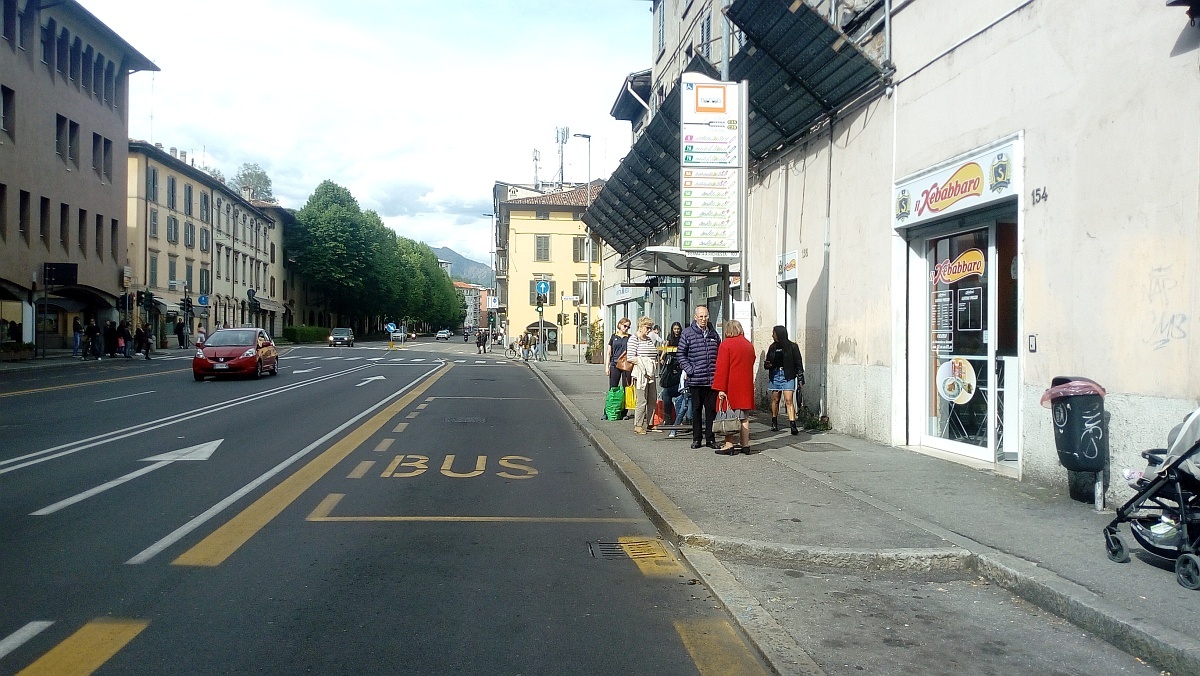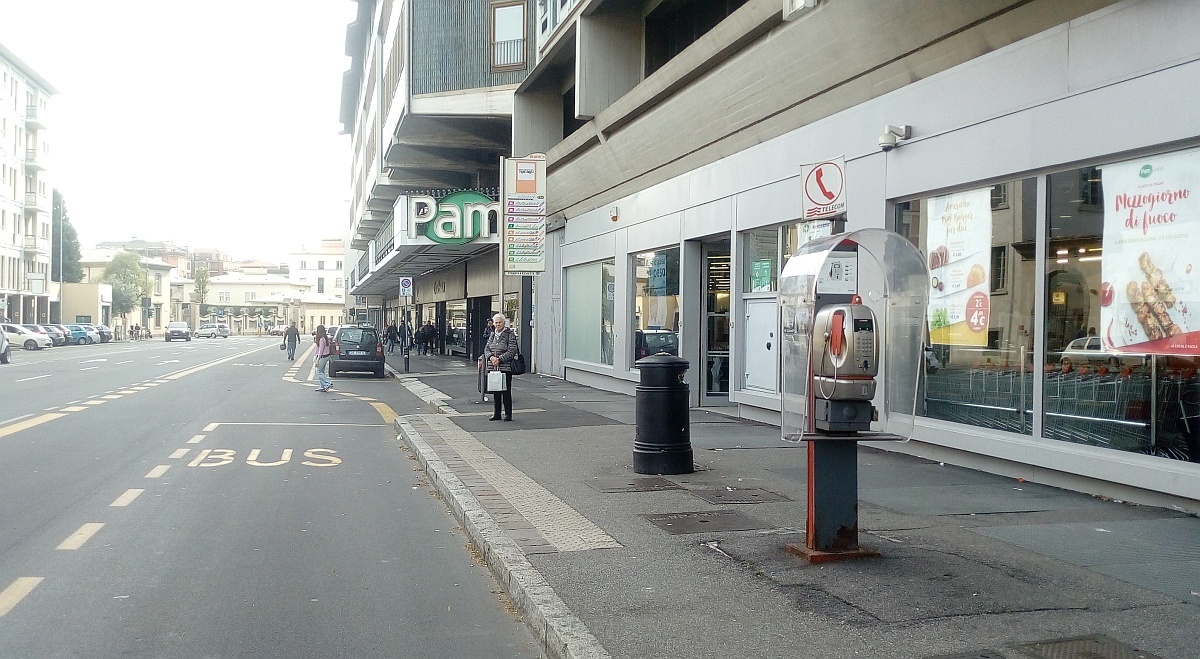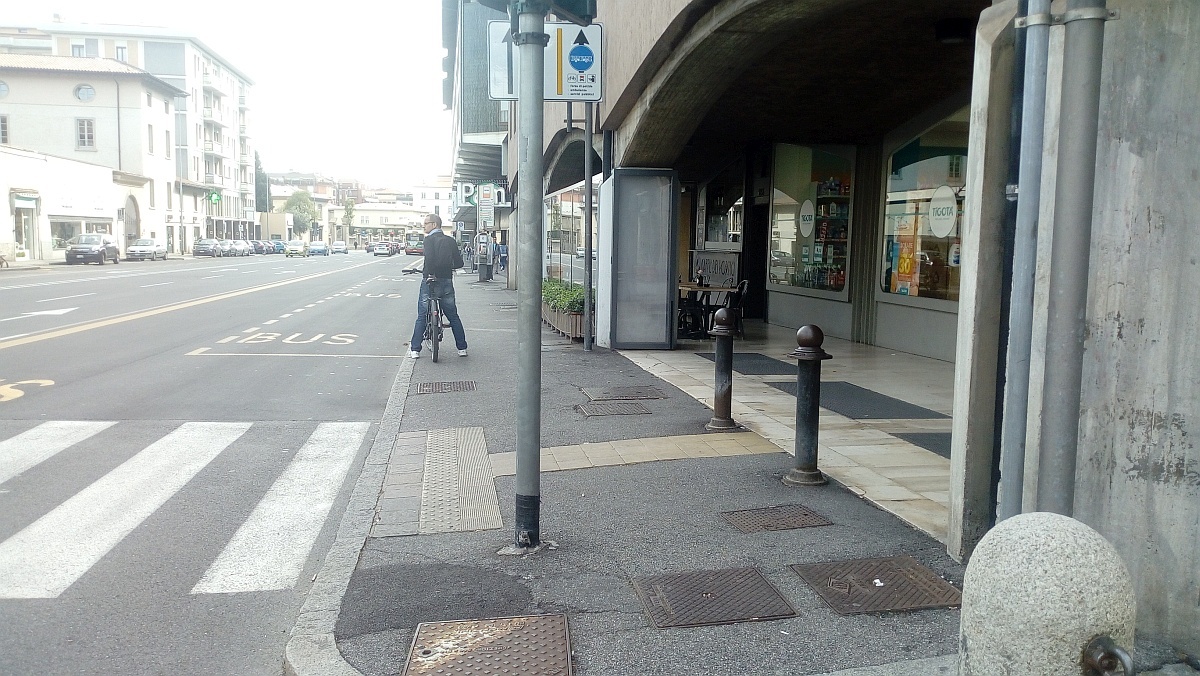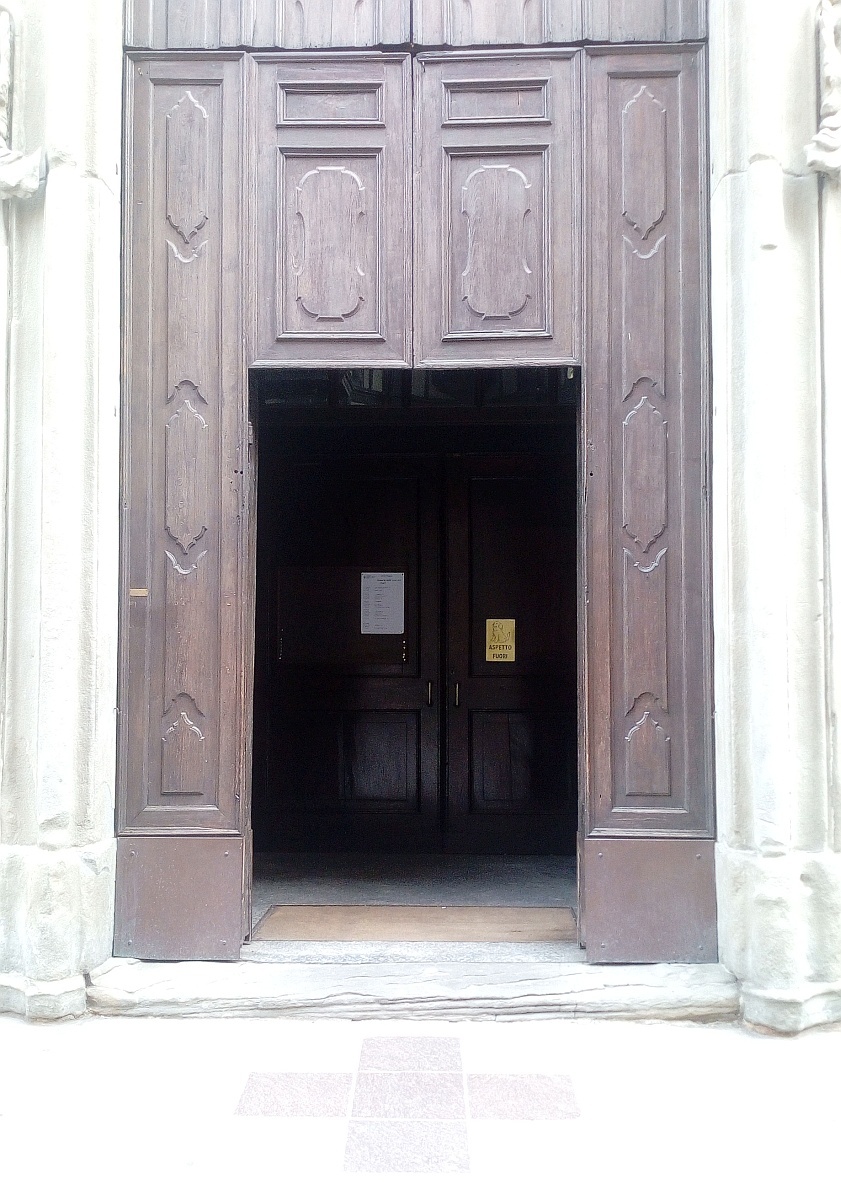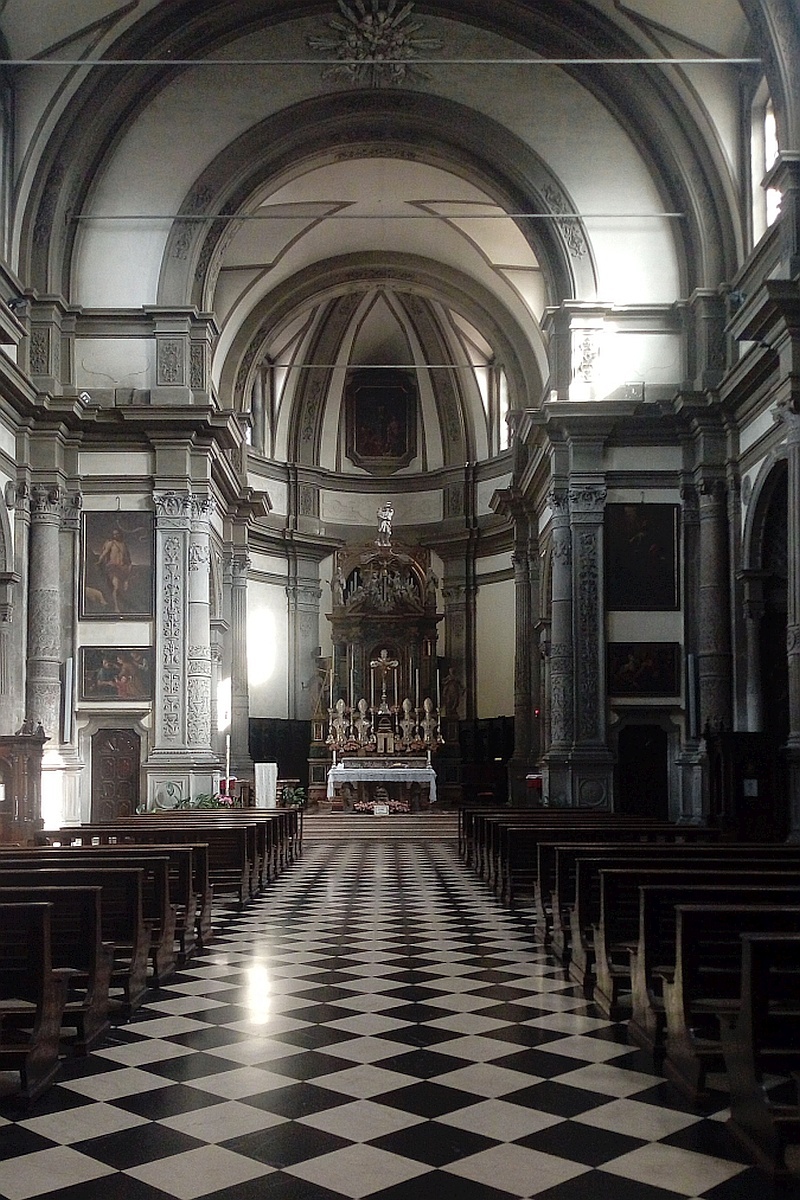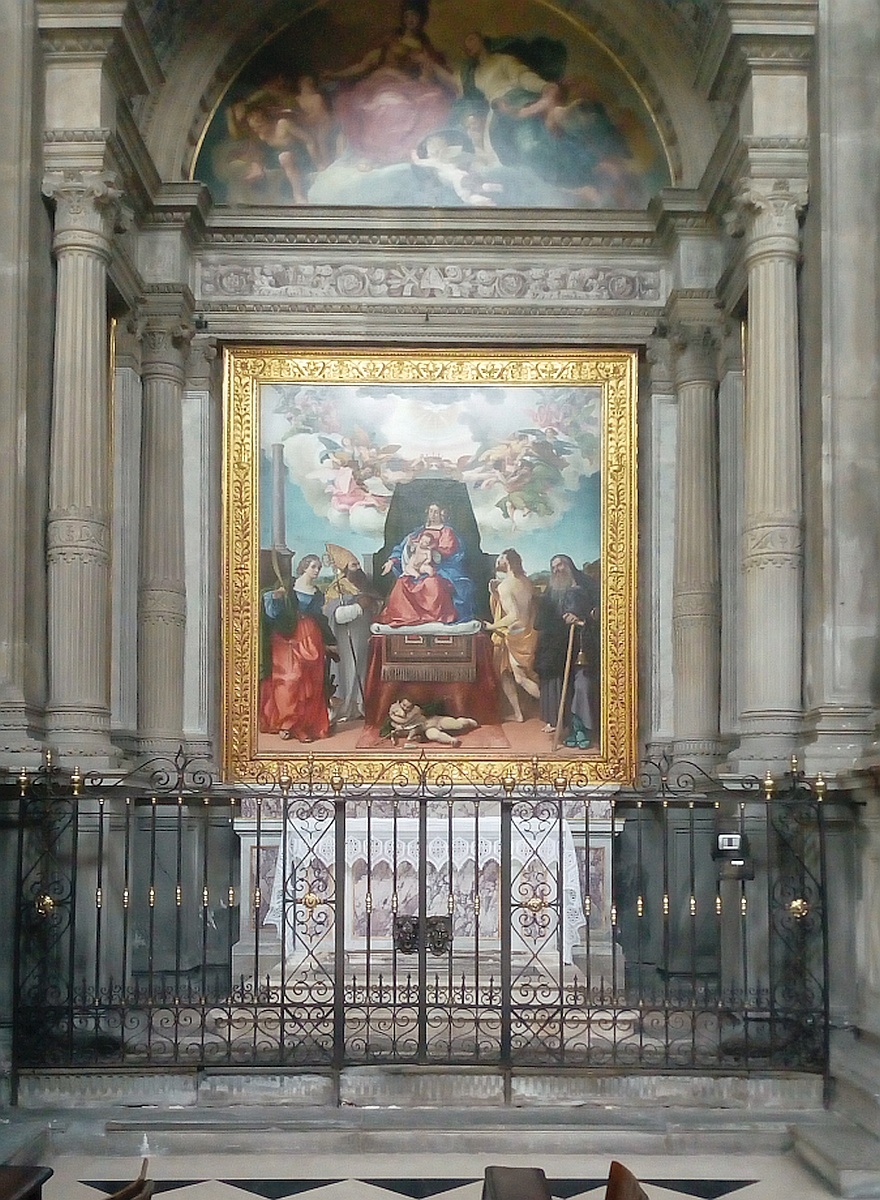Hardly walking down central Via Tasso in lower Bergamo will you remain unmoved by the rustic facade of this church, dominated by an imposing bronze sculpture representing the descent of the Holy Spirit looming over the churchyard.
The original structure of the building was part of a 14th-century monastic complex: the desire of a large group of wealthy 16th-century merchants to assert their social status no longer only through palaces but even through a church, transformed it profoundly.
The renovation of the church was very elaborate and two major architects from Bergamo worked on it at different times: Pietro Isabello in the 16th century and Gian Battista Caniana in the 18th century.
An imposing nave will greet you as you enter, with five chapels on each side: in the fourth on the right, don’t miss the marvelous altarpiece (oil on panel) by Italian Renaissance master Lorenzo Lotto, “Madonna and Child, St. Catherine of Alexandria, St. Augustine, St. Sebastian and St. Anthony Abbot,” from 1521.
Lotto’s Altarpiece is certainly the most valuable work in the church, of which you can admire the bright sky with the swirl of clouds and angels framing the appearance of the dove of the Holy Spirit.
You may recognize, in the majestic and imposing arrangement of the figures, a reference to the painting of the great Renaissance artist Raphael Sanzio, who also frescoed the Vatican Rooms.
You can organize a small “hunt for the ages” by looking at the composite facade that was never completed: the stone base, the small rose window (a decorative element in the shape of a circular window applied to the facades of Romanesque and Gothic style churches) in the center and the walled window on the right date back to the 14th century; on the left, the stone masonry attachment belongs to the 16th century, while the two niches and the portal are from the 18th century.





